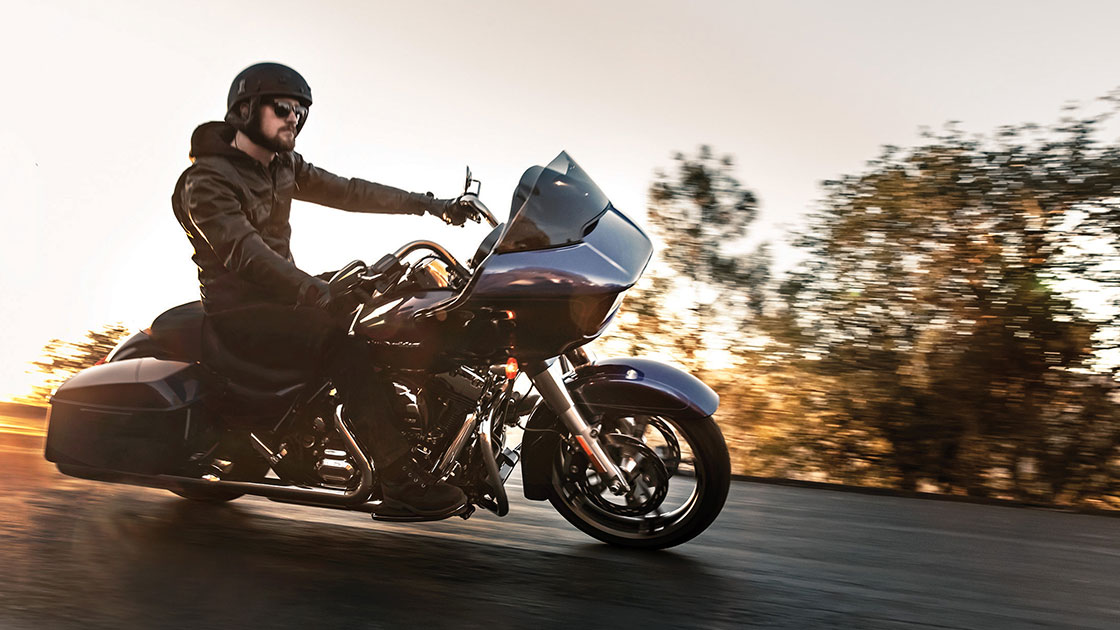Motorcycle ABS benefits both high-risk and low-risk riders
November 20, 2014

Antilock braking systems (ABS) can benefit both risk-taking motorcycle riders and those who are more cautious on the road, a new HLDI analysis suggests. What's more, high-risk riders are no less likely to opt for a bike equipped with the technology than those who appear less risky based on their auto claims record.
Previous studies by HLDI and IIHS have reported that the technology substantially lowers rates of collision claims and fatal crashes (see "New research adds to the evidence that motorcycle ABS prevents crashes," May 30, 2013, and "Antilock brakes on motorcycles prevent crashes," March 31, 2010). Those studies looked at motorcycles with optional ABS, comparing the crash rates of those equipped with ABS with the same models without the feature.
One limitation of that approach is that it's difficult to account for all the differences between riders who choose to purchase an ABS-equipped bike and those who don't. Although key variables like age and gender as well as motorcycle models are controlled for, a question left unanswered is whether people who value safety might be more inclined to spend money on ABS and also more likely to ride safely, thereby skewing the results.
To answer this question, HLDI analysts looked at a subset of riders of motorcycles with optional ABS who could be matched to an automotive claims history. These riders were grouped by claim frequency: zero (people with no auto claims during the entire period for which insurance records are available), low (those with up to one claim per five insured years), medium (between one and two claims per five insured years) and high (two or more claims per five insured years).
Before looking at the effect of ABS on these groups of riders, the analysts examined how motorcycle collision claim frequency varied by auto claims experience. They found that riders with a high rate of auto claims had a motorcycle claim rate that was 64 percent higher than riders with no auto claims. Riders with a medium auto claim frequency had an 18 percent higher rate of motorcycle claims, while those with a low auto claim frequency had a 4 percent higher motorcycle frequency.
"There's no way of knowing how risky a person is when they're riding a motorcycle, but auto claims history appears to be a pretty good proxy," says HLDI Vice President Matt Moore.
The previous HLDI analysis from 2013 found that ABS reduces the frequency of collision claims by 20 percent. For the new study, the analysts checked that the subset of riders matched to auto claims histories had the same estimated benefit from ABS. They found that it did.
HLDI then ran the ABS analysis again, this time controlling for auto claim rates. The effect remained and even increased slightly to 21 percent.
The analysts also looked at the effect of ABS on each of the auto claim frequency groups separately. In order to have enough exposure, they included not only motorcycles with optional ABS, but also those that had the feature standard or didn't have it available at all. Motorcycle class and engine displacement were used to control for other differences among motorcycles.
ABS reduced motorcycle claim frequency for all four auto claim groups. The decrease ranged from 24 to 29 percent.
"Riders whom we would consider high-risk based on their driving benefit from ABS about the same as low-risk ones," Moore says.
High-risk riders also are no less inclined than low-risk riders to opt for ABS as optional equipment, the study shows. In fact, just the opposite is true. Thirty-two percent of the high-auto-claim-frequency riders of models with optional ABS had motorcycles equipped with the technology, while just 26 percent of those with no auto claims did.
"Based both on who is opting for ABS and how much they benefit from it, self-selection doesn't appear to have influenced our earlier findings," Moore concludes.
Antilock brakes prevent wheels from locking up, and that's crucial on a two-wheeled vehicle. With a car, wheel lockup might cause a skid, but on a motorcycle, it often means a loss of balance and a potentially deadly fall. ABS works by automatically reducing brake pressure if it detects that a wheel is about to stop rotating and then increasing it again after traction is restored. This allows the rider to brake fully in an emergency without fear of a lockup.
With study after study showing large benefits for ABS, IIHS and HLDI petitioned the National Highway Traffic Safety Administration last year to make the technology mandatory on all motorcycles (see "New research adds to the evidence that motorcycle ABS prevents crashes," May 30, 2013). European regulators have already taken that step: In the European Union, motorcycles with an engine displacement of more than 125 cc will be required to have ABS beginning in 2016.